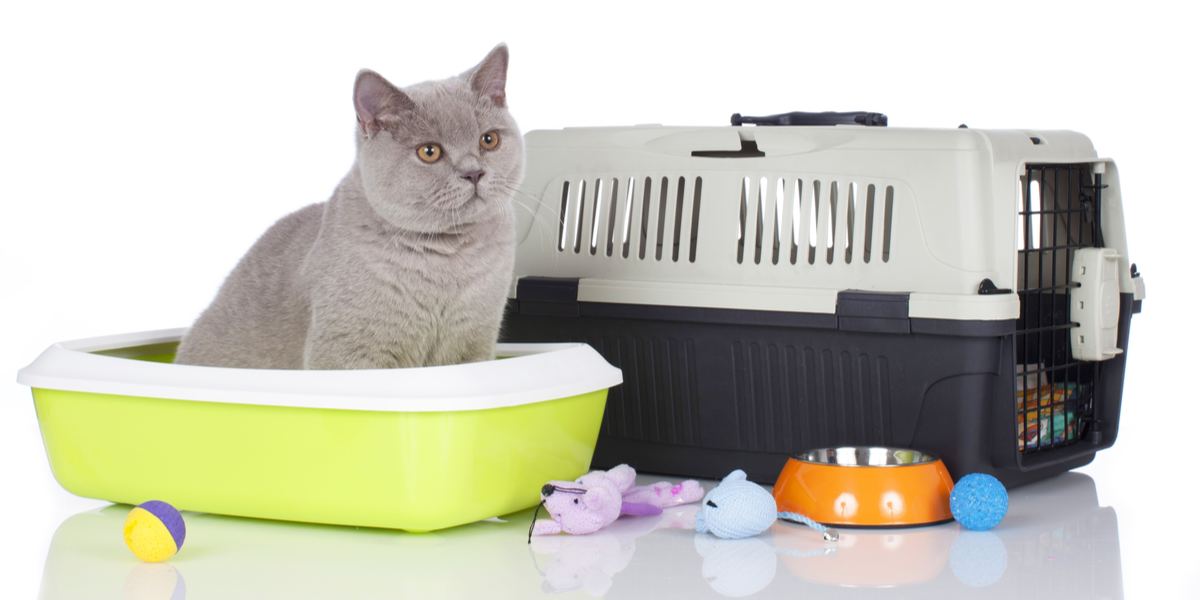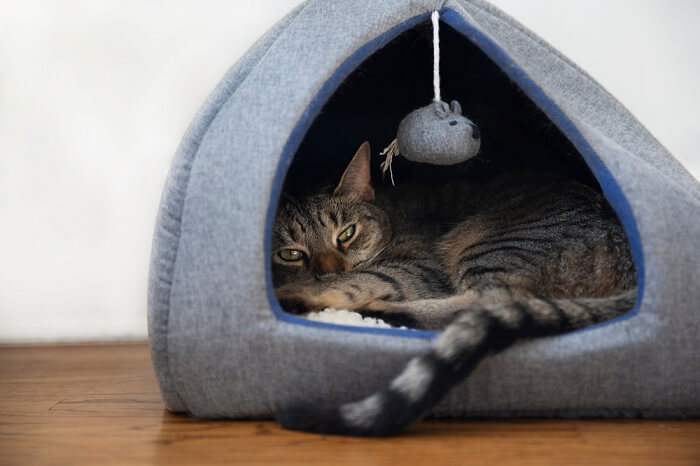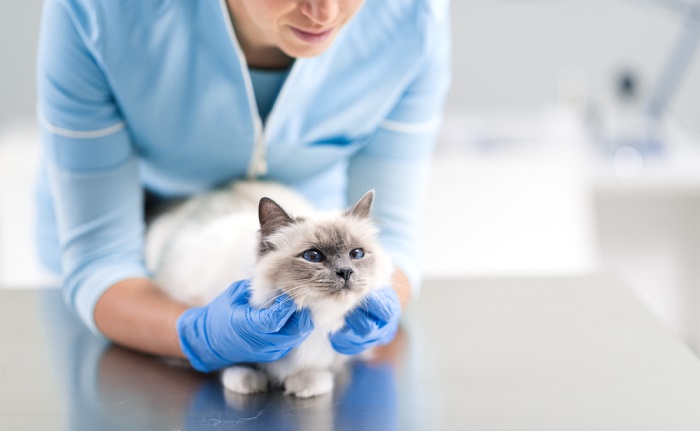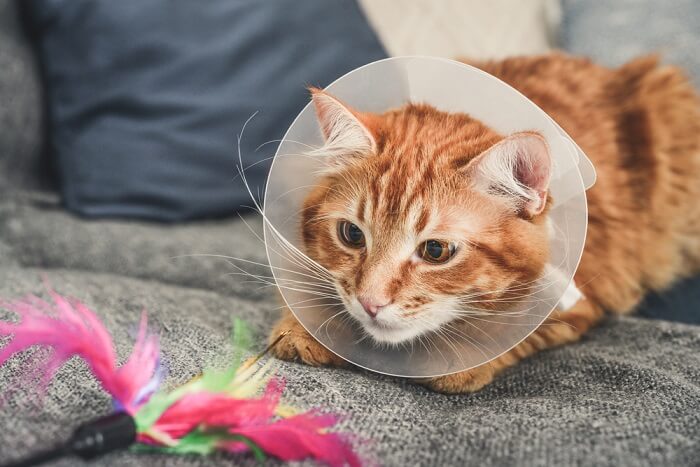
Whether you are a first-time cat owner or looking to adopt a new member into your existing brood, there are many things to consider before introducing a new cat into your home.
Cats are generally very independent and are typically able to adapt to almost any situation. However, every cat has its own, unique personality; just like you, any pre-existing animals, and your home have their own, unique personalities, too.
Being a first-time cat owner requires getting essential supplies beforehand, paying attention to safety issues, maintaining grooming regiments, staying on top of medical care, and recognizing the long-term commitment that comes with cat ownership.
But, even if you are an experienced cat owner and are introducing a new one into your already existing colony, there are still many important aspects of adoption to think about before introducing a new cat into your home.
So, in this article, we will give you some important information about how to introduce a new cat into your home, as well as giving you some useful tips about how to provide your new cat with what it needs to live a happy and healthy life.
At A Glance: How To Introduce A Shy Cat To A New Home

It may take a few days and sometimes much longer for your new cat to become comfortable in your home
Basic Supplies

Cats require a few, basic supplies in order for them to be happy and healthy. These supplies include food and water, a litter box (and litter), a scratching post or scratching pad, a comfy bed or cozy spot, grooming supplies, and some toys to play with.
Home Environment

Regardless of its age, a cat may exhibit some destructive behavior in a new environment. So, before you bring your new friend home, be sure that you have a safe environment that is free from any potential dangers.
Safe Haven

Give your new cat its own, private area so that it has time to get used to the sights, sounds and smells of its new environment. If you have other animals already in your home, keep your new cat temporarily isolated from them during this period.
Slow Introductions

It may take a few days and sometimes much longer for your new cat to become comfortable in your home, especially if you already have other animals. So be sure to give your new cat ample time to gradually get used to its new surroundings.
Veterinary Visits

Take your new cat to your veterinarian within the first week after adoption for a routine check-up. Your vet can help you determine what flea and tick medication will work best for your cat, as well as giving your cat any needed and essential vaccinations.
General Health

Pay close attention to your new cat’s health and look for symptoms of common illnesses. Shelter cats can sometimes bring home infections from shelter environments, as well as potentially catching something from other animals in your home.
Things To Keep In Mind When Introducing A Scared Cat Into Your Home

Providing you cat with a safe haven and her own cozy spot when adjusting to the new home can be very helpful.
In this article, we’ll expand on some of these important things to consider when introducing a new cat into your home.
And, remember, all cats have their own unique personalities, so you may have to do some experimenting to discover what works best for your new cat, and what works best for you. Still, cats can enhance almost anyone’s life, and you can definitely enhance the lives of the cats that you adopt.
New Cats Require Specific Supplies

Regardless of whether or not you are a first-time cat owner or adding a new cat into a home with other animals, there are certain, basic supplies that you need to have beforehand. Make sure that you have food and water (as well as food and water bowls), a litter box with litter, a scratching post or scratching pad, a bed or cozy spot, grooming supplies and toys.
It’s very possible that your new furry friend will feel a little shy and timid when you first bring it home, so providing it with its own space will give it a greater sense of comfort and security. This can easily be done by setting up your new cat in your bedroom, bathroom or home office. Just be sure that it has some privacy and doesn’t come into contact with other animals in your home right away.
Make Sure That Your Home Is Cat-Friendly

Your new cat will start to get comfortable with its new surroundings and begin to explore your home.
Cats can sometimes have a tendency to exhibit destructive behavior when they are introduced into a new environment.
This can include spraying or marking their territory, chewing on electrical cords and blind cords, clawing on furniture, eating plants and flowers, and being aggressive toward you and other animals. However, after awhile, your new cat will start to get comfortable with its new surroundings and begin to explore your home.
So, make sure that electrical cords are covered and that blind cords are out of their reach. Also, check the types of plants that you have and make sure that they are not poisonous if ingested.
Medications, toiletry items and cleaning supplies should all be put away, wastebaskets and garbage cans should not be left out in the open, and toilet seats should be closed. Lastly, the doors to washers and dryers should always be closed, and smaller appliances like paper shredders should be unplugged when not in use.
Cats Like Having Their Own Safe Spot

It’s very common for a new cat to feel uncomfortable when introduced into a new home. This can often be exhibited with general shyness and hiding, in addition to potentially aggressive or destructive behavior. And, this can especially be true if you already have other animals living in your home.
It can take some time for your new friend to become accustomed to all of the new sights, sounds and smells of its new home, so providing it with a safe haven can be very helpful during this adjustment period. Designate a specific space in your home and set up your new cat with its own food and water bowls, litter box, and a bed or cozy spot. Also, if you have other animals in your home, be sure that they don’t have access to this area, and only make it available to your new cat.
Be Patient With Introductions

It’s very important to give your new cat some personal space and not force yourself upon it, or be too quick to introduce it to your other animals.
It might take some time for your new companion to get comfortable in its new surroundings. This may take days, weeks or even months depending on the cat, and this can be especially true if you already have other animals already living in your home.
Regardless, it’s very important that you give your new cat some personal space and not force yourself upon it, or be too quick to introduce it to your other animals.
Providing your new cat with some personal space is a great way for it to eventually become comfortable enough to willingly engage you on its own terms. Doing this will allow your cat to gain a sense of trust with you, which will eventually lead to a stronger bond in the long run.
When it comes time to finally introduce your new cat to your other animals, do it gradually in small increments. Also, be sure to monitor their interactions., and be ready to intervene if necessary.
Make A Veterinary Appointment

Even though shelters pay very close attention to the health and well-being of the animals that they put up for adoption, your new cat may need additional vaccinations, treatments or other medical care. Plus, it’s simply a good idea for your new cat to get a full check-up during this initial stage of adoption to be sure that it’s healthy.
So, it’s extremely important that you take your new cat to a veterinarian within the first week of adoption for a check-up. Not only will your veterinarian let you know if your new cat has any health conditions that you need to be aware of, but your vet can also give you recommendations for flea and tick medications, as well as recommendations for food, grooming and general health.
Pay Attention To Your Cat’s Health

Newly adopted cats can sometimes bring home fleas, ticks and other infections if they had been in a shelter situation.
Shelters have several different cats that have come from several different environments, and bringing a new cat into your home might lead to a potential outbreak with your other animals if you’re not properly prepared. Also, your new cat may even catch something from your pre-existing animals.
During this early stage, it’s important to pay close attention to the general health of your newly adopted cat and look for signs of any illnesses. If you notice things like coughing, sneezing, runny eyes, a runny nose or unhealthy bowel movements, make an appointment with your veterinarian as soon as possible to avoid any potential long-term ailments.
Final Thoughts

Cats are great companions and can usually adapt to almost any environment in a relatively short amount of time. However, there are many things to consider before introducing one into your home.
But, if you provide your new friend with the right environment, along with the right supplies and a little patience, you can create a happy and healthy life for your new cat, as well as creating a long-lasting friendship.








I have a sweet 16 yr. old female cat; I’m her 5th owner & have had her since she was 10. Recently a 1 yr. old male cat has adopted us. He is also sweet. Problem is Ellie was badly hurt by a cat when she was a kitten per owner #1–she lost half her teeth & her vocal cords are damaged where she can’t purr. I’ve never had a cat around Ellie, but hoped she’d be ok w/ this male cat. She was not! She was terrified & hasn’t been the same since. Is there anyway I can get her to accept Paul or do I have to leave Paul outside in the cold? Thanks for any help anyone can give!
Helping a senior cat with a traumatic past adjust to a new companion can take time, patience, and careful reintroduction strategies. For personalized advice, you can ask our behavior expert directly at https://cats.com/community/behavior.
This article is titled incorrectly. “How to introduce cats to a new home” implies you and your current cat moving from the home they’ve lived in and now relocating to a new home. This is why I read this article. This was about introducing a new cat into your home. Not the same!
Hi Joanne, thanks for pointing that out. I agree that it’s confusing. Changing the name. As for information on introducing cats to a new home, you might like this article and our video on the subject.